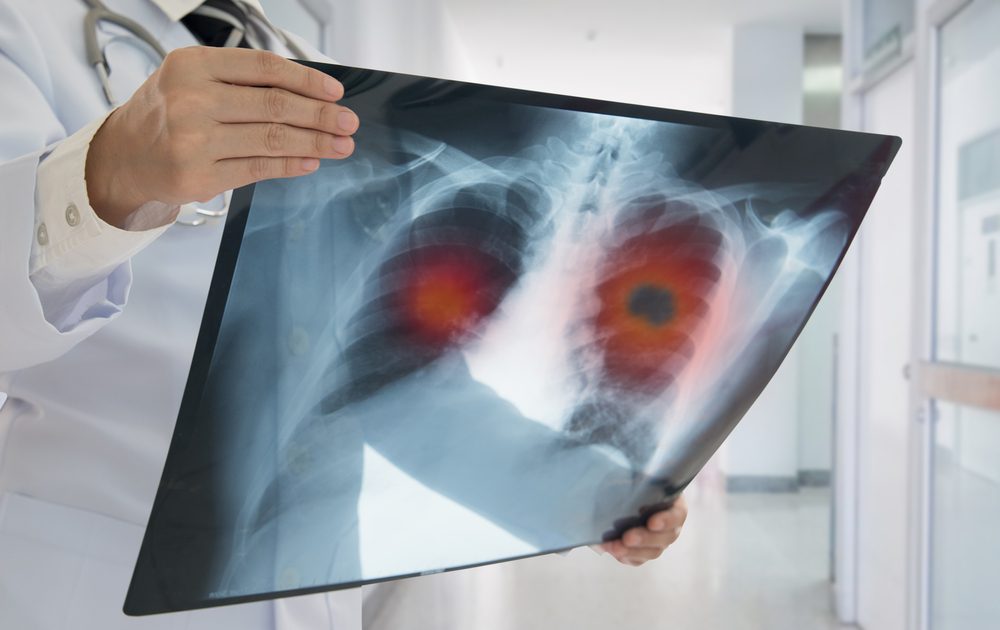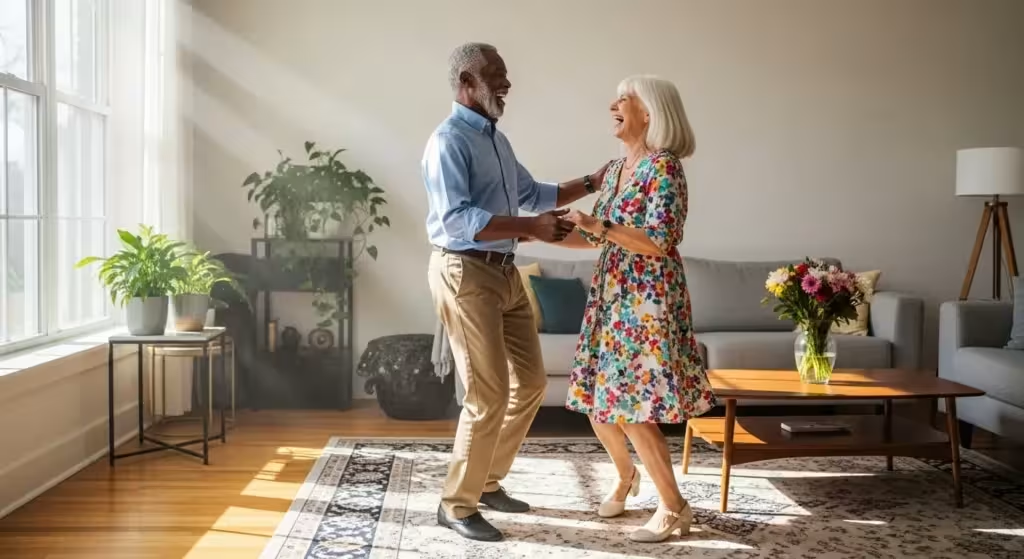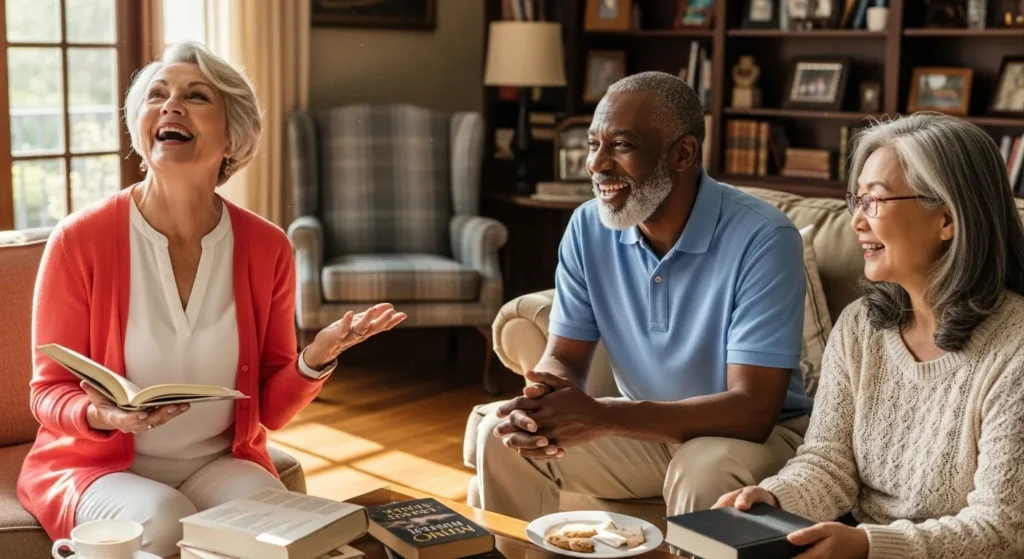
Non-small cell lung cancer
Compared with other types of cancer, three-quarters of lung cancers are only diagnosed after they have already spread in the body!
And the worst part of it is that patients end up being diagnosed only when they are already exhibiting symptoms, which generally look like simple coughs, pneumonia, or even just shortness of breath, and they are not early stage ones.
These symptoms, as non-threatening as they seem to be, end up being a sign that cancer has made its way into your bloodstream or lymph system. The most common type of lung cancer is the non-small cell one, also known as NSCL for short.
Despite being the most common form of lung cancer, NSCL is very difficult to detect in the early stages as it often does not cause patients to have any symptoms and it does not appear on normal chest X-rays. Other types of screening can be used to detect it, such as CT scans or positron emission tomography (PET), but the rest of the detection procedures can actually be quite invasive.
In later stages, doctors end up taking cancer cells from the fluid that builds up around the lungs, from lung secretions, or from biopsy, in order to be able to diagnose the patient. Unfortunately, by this time in the late stage, despite getting the confirmation, the chances of survival are very low.
This is why it is crucial to be able to spot any signs of NSCL in its early stages. So, anyone who has a long history of smoking or who works in an occupation that exposes them to fine particles in the air should see a specialist and discuss the possibility of a CT screening.
Or even just talk to them about the risk they have exposed themselves to. It’s better to ask a question than to suffer later!




















21 thoughts on “Early Stage Cancer: 7 Types That Are Almost Impossible to Detect”
I survivrd a 1.5 X 1.7 cm pancreatic adenocarcinoma in the bile duct of the pancreatic head. The way I knew it was there, despite lack of symptoms was as follows:
I had a sonogram of the adominal area for another reason—which turned out negative for what the dr. thought was happening. I had no symptoms. the radiology report listed an observation of “dilated pancreatic main duct”. As I usually do, I looked up what this meant. It said that there was an 80% chance a neoplasm would start to grow in that duct. It could be malignant or benign or start out as benign and become malignant. My grandmother died of pancreatic cancer. I had been treated for a very small adenocarcinoma called “non mammary pagets disease” in the outer vulva. I read all sorts of info. Included was a statement from surgical oncologists that non mammary paget’s usually occurs secondary to another cancer. Since previous med center ct’s and sonograms showed no cancers y oincolgist for the paget’s figured there was no other cancer. I also read that with pancreatic cancer you can have it for 10–15 years before it actually reveals itself—also it cannot be seen on a ct unless it is larger than 1/2 cm.
When you are awake your conscious mind is in charge; when you are asleep the subconscious mind is in charge. What the sub conscious mind does when you are asleep is to figure out the significance of all the information you have in your mind. When I woke up I knew I probably had a cancer in the pancreatic duct—so at the check up for the paget’s I told that gynecological oncology surgeon to do a ct scan because I was sure there would be a pancreatic cancer there and I was refusing to die from pancreatic cancer. He had the ct scan done. We drove home from MSK in NYC the next day (about 300 miles). 2 days later I was called to return for a more finely descriminating ct—-and 2 days after that one was called and told that I had an appointment with the head of the hepatobilliary dept.—who when I met him said—You have cancer—youre getting surgery–then chemo and radiation. Ireplied calmly “I know” because I had gotten the radiology report and read every thing I could about this. 😊 The doctor said ” are you one of those people who likes to read about everything that’s going on?” I said “yes” so he handed me a 68 page print out about every detail of the whipple procedure and after care etc.
So it is good for people to get preventive checkups, evenbuying their own tests and reeading what the significance of the test and all results means—BUT I have to admit–this whole diagnosis was sort of part luck. I was also wondering if since I’s been doing Qi Gong, Tai Chi, and some martial arts for years if I somehow had a closer connection between my mind and body—which sound really weirs, but anyway I am glad some very brilliant scientists have researched ways to survive the after effects of chemo and radiaiton because unfortunatley the cures soome timmes kill you later on.
That was 4 1/2 yearas ago. I am currently using off label d oses of rapamycin and disanitib and quercetin. Why? Research shows an answer tot the question”why do people with a cancer later get another one?” The answer. Excessive mTOR type 1 and excessive scenecent cells ( nicknamed Zombie cells by the researchers). The rapamycin stops your body from amking more scenecent cells and stops cardiomyopathy, and prevents fibrosys of the heart , lung and muscles (which are all side effects later from chemo). The D and Q kills the remaining excessive scenecent cells and alklows your body to make new mesenchymal stem cells. This is calle d a senolytic. The other senolytic uis fisetin. There are specific protocols for these 3 things and a dr. is required to supervise your use and results and to prescribe the rapamycin and the disatinib. I am currently in excellent health even though I am 74 and the survival rate for what I had is very low.
You are my hero along with my friend, Dee, who found the disease early and had Whipple surgery (which sounds like an ordeal in itself). Dee works out with CrossFit and was recently declared the 26th strongest 65 year old woman in the world. God love her. Sadly, my brother was diagnosed with Stage 4 and passed last November at age 63. Here’s to you and Dee – two incredible women who were meant to conquer that cruel disease!
How did you gain the opportunity for a doctor to prescibe those medications and does your insurance cover the expense?
I had breast cancer twice, double mastectomy. Pancreatic cancer stage 1, Whipple procedure. How did you get the two off label drugs? My fear is the cancer will come back once again in another part of my body.
Have you ever heard of spellcheck? Some of your article is so difficult to read due to your many misspellings! You are obviously very intelligent, as you are a great researcher and self-advocate-very smart indeed! However your misspellings are a great distraction and takes away from the article. Thank you for your research and information. You are a gem!
My wife was diagnosed in April of 2014 with Ovarian cancer. True to form, she was the top of stage three and was give 6 months. The cancer had no idea how tough this woman was. She went through chemo, then surgery, then chemo again. She made it for 27 months after that day.
She taught for 40 years. She was a wife, a mother, a teacher, a community leader, and a good person. we were married for 43 1/2 years.
That’s so so Awesome! GOD IS TRULY AMAZING!!
My wife has gone through Chemo not once, not twice but 3 times and is doing well. Nonhodgkins Lymphoma
May she rest in heaven, 💝 and she couldn’t have made it without you and your support. Thank you, God bless 🙏.
God blessed you with a great woman
I have no diagnosis just yet I’m still in the finding out what’s going on stage. I like to have knowledge about what’s going on in my own body so I can make an informed decision about any treatments. Thank you for sharing your stories. I appreciate it it helps you not to feel so alone on the journey.
I had kidney cancer and kidney removed in 2020. It was found when I went to the ER with pain that had nothing to do with the cancer, on my left side under the stomach.
Surgery
Please pray for me as I battle ovarian cancer
I need prayers
Financial blessings
Can’t pay my little rent
Ernestine dorsey
582 capitol.parkway ct
Montgomery Al 36107
I am a widow
A senior
I can’t even get my 6 month cat scan for my kidney cancer. It has been 9 months now and no way am I going to get my cat scan that I HAVE HAD FOR 6 years. The urologist would only give me an MRI NOT COMPARED TO THE LAST ONE. THE HOSPITAL HAS MESSED UP ALL OF MY PAST 7 scans and did not even follow the order on one and does not care.
The urologist and oncologist refuses to do a thing citing they don’t like contrast though all of my labs have been fine and I have had no reaction to the contrast. I am done with the medical establishment forever. It is too stressful. I chose death.
CDC shows an alarming rise in RARE CANCERS post COVID shots. A 3900% increase!!!
Please note , an increase POST SHOT[COVID} in young males between 15 to 30 years old, a 3000% increase in sudden death. This is on the CDC website. Thank you Dr. {I can recite the entire “JABBERWOCKY poem” Fauci for your shoving poison down our throats with all of your lies.
Most appreciated.
I am sorry if this had a nagative effect on you. I grew up with many friends in iron lungs because of polio. When the vaccine came out, we all rushed to get it as my grandfather was a teaching durgeon at U of Texas.
No one in my extended family has ever had a problem. It is too soon and very complicated to determine what actually caused those deaths. With over 325 million prople in our country, why did those soecific people have a problem? Eventually we will find out , and then you can look over the results. I doubt it was the vaccine that actually was to blame.
I have had covid 3 times. The first time was from sitting on a plane next to a young man returning to Phoenix from Yuhan. For 3 weeks I could not breathe and finally went to urgent care where a very good PA put me on the same meds they later prescribed at the hospitals. The second time a stranger coughed on me. I had the rashes and thought I would not survive. The next time it was very mild, but I was determined to NOT get it again. I did not want to be the next body in the refrigeration truck. I was thrilled to get the vaccine. I still wear a mask when I go to s big event and I made dure I eas up on all my vaccines. BTW, i have not had one cold since I have had the vaccine and updates. Not one!
I consider it a huge privilege to receive the vaccines. If you get your news from England or France you will discover that a lot of what you are hearing is just made up or actual lies being told by people who make money off telling kies online or on broadcasts. Listening to that crap is like poison. Turn them off and go to BBC or France 24!
should listen to yourself to blame others for yourself get a Covid shot because our government said too sometimes common Nollaig is better than jumping like everyone else think for yourself do for yourself not because the Jonses have it or did it know your rights!!!!!
Well I am concerned now about a smooth lump right at the corner of my left upper though. Crotch area. I will call my Dr tomorrow and have it looked at. This article helped be make that decision. Thx Gretchen.
“ Can COVID-19 vaccines cause cancer or make cancer grow?
There is no information that suggests that COVID-19 vaccines cause cancer. There is also no information that suggests these vaccines can make cancer grow or recur (come back).”
will my Medicare and supplement insurance likely pay for a scan for preventive cancer checks. VEERY STRONG IN MY FAMILY AND I WOULD LIKE TO BR PROACTIVE. THANK YOU.
My gallbladder was getting worse (my whole family has bad ones and has had to have them removed) went in for a scan and was then told to follow up with my doctor – they got me in the next day and I was expecting to go in and talk about getting my gallbladder removed (setting a date etc). My doctor who I had for about 17 years by that point just said, “I’m not going to beat around the bush-they found a klatskin tumor in the bile ducts of your liver. There’s nothing we will be able to do for you except make you comfortable.” We all know that we are going to die someday but when you get that timer set and you know it’s going to be over soon – it becomes very overwhelming. They tried over and over to go in and get a piece of it (5 to be exact) but couldn’t reach it. I went to one of the top cancer doctors here in Oregon and the last time that failed I went to see him and he decided he wanted to go in after it – the next day … he had a hard time reaching it even after opening me up but he got it and took the right side of my liver and many other things – I was in the hospital for over a month but I’m alive because of my gallbladder. See no one survives that cancer because it is never found in time but because of the scans on my gallbladder I am still alive – 7 years later. Everything happens for a reason…